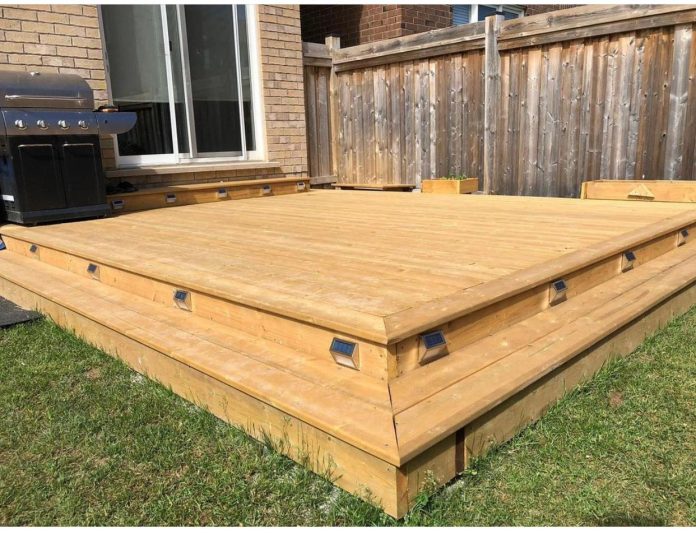Building a deck is an exciting project that can enhance your outdoor living space and add value to your home. However, it’s crucial to understand and adhere to deck codes and regulations to ensure the safety and legality of your construction. Building codes are established by local authorities to set minimum standards for construction practices, materials, and structural integrity. By familiarizing yourself with deck codes and regulations, you can build your deck safely and confidently. Here’s what you need to know:
1. Know Your Local Building Codes:
Each municipality or jurisdiction has its own set of building codes and regulations that govern deck construction. These codes specify requirements for factors such as structural design, materials, footing depth, railing height, and attachment methods. Contact your local building department or visit their website to obtain the latest version of the building codes applicable to your area.
2. Obtain Necessary Permits:
In most cases, building permits are required for deck construction to ensure compliance with building codes and regulations. Before starting your deck project, obtain the necessary permits from your local building department or planning office. Permit requirements vary depending on the scope and size of the project, but they typically involve submitting detailed plans, paying a fee, and scheduling inspections at various stages of construction.
3. Understand Structural Requirements:
Deck codes specify structural requirements to ensure the safety and stability of the deck. This includes guidelines for sizing and spacing of framing members such as beams, joists, and posts, as well as requirements for footings or piers to support the weight of the deck. Be sure to follow these requirements carefully to prevent structural failure and ensure the longevity of your deck.
4. Comply with Railing and Guardrail Standards:
Railing and guardrail standards are an essential aspect of deck safety outlined in building codes. These standards dictate the minimum height, spacing, and strength of railings to prevent falls and provide a safe environment for occupants. Typically, deck railings must be at least 36 inches high for residential decks, with additional requirements for spacing between balusters or pickets to prevent small children from slipping through.
5. Choose Approved Materials and Fasteners:
Building codes often specify approved materials and fasteners for deck construction to ensure durability and structural integrity. When selecting materials such as lumber, decking boards, and railing components, choose options that meet or exceed code requirements for strength, durability, and resistance to decay and corrosion. Similarly, use corrosion-resistant fasteners and hardware designed for outdoor use to ensure long-lasting performance.
6. Follow Proper Installation Techniques:
Proper installation techniques are critical for meeting code requirements and ensuring the safety of your deck. This includes methods for attaching ledger boards to the house, securing framing members with appropriate fasteners, and installing railings, stairs, and other components according to manufacturer instructions and code standards. Improper installation can compromise the structural integrity of the deck and pose safety hazards to occupants.
7. Provide Safe Access and Egress:
Building codes include requirements for safe access and egress to and from the deck, particularly for elevated decks. This may involve guidelines for stair design, including minimum tread depth, riser height, and handrail specifications. Ensure that stairs are properly constructed, securely anchored, and free from hazards such as slippery surfaces or inadequate lighting to prevent accidents.
8. Consider Environmental and Site Factors:
In addition to structural and safety requirements, consider environmental and site factors that may impact deck construction. This includes factors such as soil conditions, drainage patterns, wind loads, and seismic considerations, which may vary depending on your location and site-specific conditions. Take these factors into account when designing and planning your deck to ensure it can withstand environmental stresses and remain safe and stable over time.
9. Schedule Inspections:
Building departments typically require inspections at various stages of deck construction to ensure compliance with building codes and regulations. Schedule inspections promptly and coordinate with building inspectors to verify that your deck meets the necessary standards before proceeding to the next phase of construction. Common inspection points include footing excavation, framing installation, railing attachment, and final completion.
10. Consult with Professionals When Needed:
If you’re unsure about any aspect of deck construction or code requirements, don’t hesitate to consult with professionals such as structural engineers, architects, or experienced deck builders. They can provide valuable guidance, expertise, and advice to help ensure that your deck is built safely, legally, and to the highest standards. Investing in professional assistance can provide peace of mind and help avoid costly mistakes or code violations.
By understanding and adhering to deck codes and regulations, you can build your deck safely, legally, and with confidence. Take the time to research and familiarize yourself with the applicable building codes in your area, obtain necessary permits, and follow proper construction techniques to ensure the success of your deck project. Building a deck that meets code requirements not only protects the safety of occupants but also enhances the value and enjoyment of your outdoor living space for years to come.
